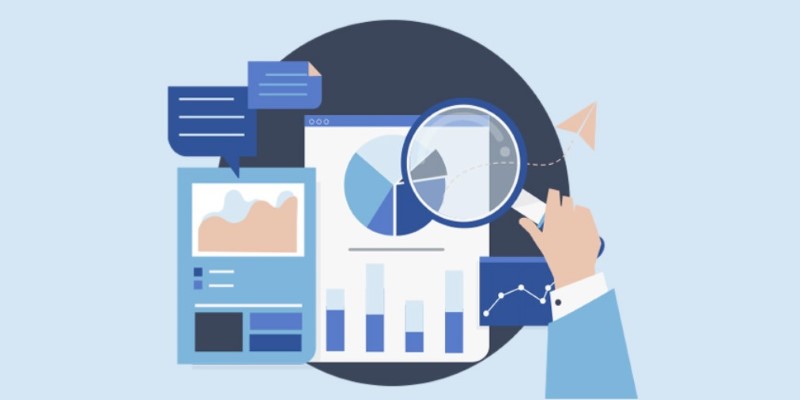Migraines and headaches can disrupt daily life, causing discomfort and reducing productivity. While many people experience them occasionally, others may deal with frequent, debilitating episodes. Understanding how to prevent migraines and headaches is essential for improving quality of life.
Whether triggered by stress, diet, or environmental factors, there are ways to reduce the frequency and intensity of these headaches. This article will provide detailed, practical tips for preventing migraines and headaches, backed by the latest insights from 2024. These suggestions can help minimize the onset of headaches and create a more comfortable day-to-day experience.
While there's no universal cure, small lifestyle changes can help manage these conditions. Here are nine practical tips to help prevent migraines and headaches.
One of the most crucial steps in preventing migraines is identifying your triggers. Everyone's body reacts differently, and migraines can be set off by various factors, including diet, weather changes, and even stress levels. Keeping a headache diary can help track when your migraines occur and what you were exposed to before the onset.
Once you've identified potential triggers, you can work on avoiding or mitigating their impact. For instance, if certain foods, like aged cheese or caffeine, cause issues, reducing or eliminating them from your diet might reduce migraine frequency. Environmental factors like bright lights or strong smells can also be identified and managed with small lifestyle changes.
Sleep is crucial for both mental and physical health. For migraine sufferers, irregular sleep patterns can be a significant trigger. Maintaining a consistent sleep schedule helps regulate the body's natural circadian rhythm, reducing the chances of migraines. Experts recommend aiming for 7-9 hours of quality sleep each night, going to bed, and waking up at the same time every day, even on weekends.

Avoiding excessive screen time before bed and creating a relaxing pre-sleep routine can further improve sleep quality. Prioritizing sleep hygiene may also reduce the frequency of headaches.
Stress is a common factor contributing to tension headaches and migraines. Although it's impossible to eliminate stress, finding effective ways to manage it can help reduce the likelihood of migraines. Techniques like mindfulness, yoga, or deep breathing exercises can promote relaxation. Setting aside time for self-care and ensuring a good work-life balance also play a significant role.
For those who experience frequent migraines, cognitive behavioral therapy (CBT) can be an effective method for changing the way you respond to stress and, in turn, decreasing migraine frequency. Keeping stress levels in check not only benefits migraine prevention but also overall well-being.
Dehydration is a well-known trigger for migraines and headaches. Staying hydrated is one of the simplest and most effective ways to prevent these episodes. Its recommended that adults consume at least 8 glasses of water a day, but this can vary depending on activity levels, climate, and individual needs.
In 2024, experts emphasize the importance of spreading water intake throughout the day rather than consuming large amounts at once. Electrolyte balance is also essential, particularly for those who are physically active. Replacing lost electrolytes through food or drinks can help maintain proper hydration levels and reduce headache risk.
Food plays a significant role in both the onset and prevention of migraines. Skipping meals or consuming high amounts of sugar can trigger headaches in some individuals. Eating balanced, nutrient-rich meals at regular intervals helps maintain steady blood sugar levels, which can prevent both migraines and tension headaches.
Adding foods rich in magnesium, such as leafy greens, nuts, and seeds, may also help prevent headaches. In 2024, research continues to highlight the connection between diet and migraine prevention, encouraging individuals to maintain a balanced diet as part of their overall migraine management plan.
Caffeine is a double-edged sword when it comes to migraines. For some, it can provide relief, while for others, it can trigger headaches. The key is managing caffeine intake carefully. Consuming too much caffeine can lead to dependency, causing withdrawal headaches when caffeine consumption decreases.
Its essential to monitor how much caffeine you consume and whether it affects your headache patterns. If caffeine is a trigger, gradually reducing intake or switching to decaffeinated options may be beneficial. In 2024, migraine specialists recommend moderation and consistency to prevent caffeine-related headaches.
Posture may not be the first thing that comes to mind when thinking of migraine prevention, but poor posture can lead to tension headaches, particularly for those who spend long hours sitting at a desk. Slouching or hunching can strain the neck and shoulders, leading to muscle tension that triggers headaches. Maintaining good posture, taking breaks to stretch, and ensuring that your workspace is ergonomically designed can help prevent these headaches. Ensuring that your computer monitor is at eye level and using a chair that supports your lower back can also alleviate the physical stress that contributes to headaches.
In todays digital world, excessive screen time is becoming an increasingly common trigger for migraines. The strain caused by staring at screens for extended periods can lead to headaches, eye strain, and discomfort. Implementing the 20-20-20 ruletaking a 20-second break to look at something 20 feet away every 20 minutescan help reduce eye strain and prevent headaches.

Additionally, adjusting the brightness and contrast of screens, using blue light filters, and taking regular breaks can help ease the strain on your eyes and reduce the chances of headaches.
For those who experience frequent and severe migraines, preventative medications may be necessary. While lifestyle changes can significantly reduce migraine frequency, some individuals may still need additional support. There are several types of preventative medications available, including beta-blockers, anticonvulsants, and CGRP inhibitors, which have been increasingly used in 2024.
Consulting with a healthcare provider is essential to determine if medication is the right choice and to develop a comprehensive plan for managing migraines. In some cases, a combination of lifestyle adjustments and medication can offer the most effective relief.
Preventing migraines and headaches often requires a combination of lifestyle changes and, in some cases, medical intervention. By identifying triggers, maintaining a healthy routine, and making informed decisions about factors such as diet, hydration, and stress, it is possible to reduce the frequency and severity of headaches.
Understanding what works best for you can make a significant difference in managing these conditions. The tips provided here offer a well-rounded approach to migraine and headache prevention based on the most up-to-date information from 2024.
By Alison Perry/Sep 17, 2024

By Tessa Rodriguez/Sep 24, 2024

By Madison Evans/Sep 22, 2024

By Isabella Moss/Sep 17, 2024

By Elena Davis/Sep 24, 2024

By Sid Leonard/Oct 29, 2024

By Jennifer Redmond/Sep 24, 2024
By Celia Shatzman/Sep 17, 2024

By Pamela Andrew/Aug 24, 2024

By Celia Shatzman/Sep 22, 2024

By Darnell Malan/Sep 05, 2024

By Vicky Louisa/Sep 05, 2024